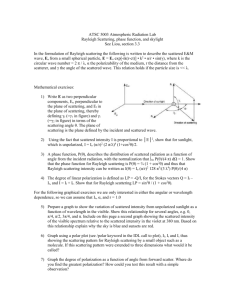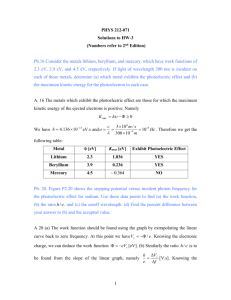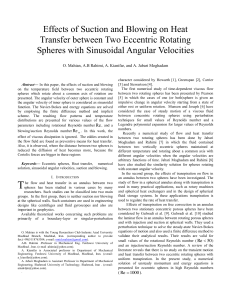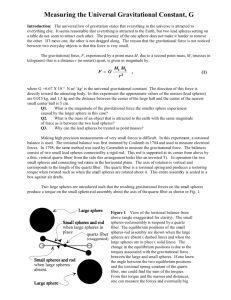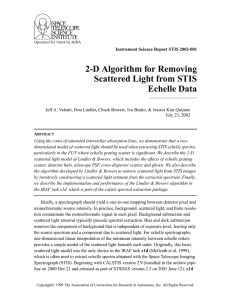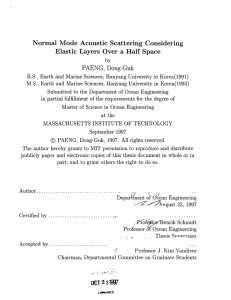S4, Optical Modeling
advertisement
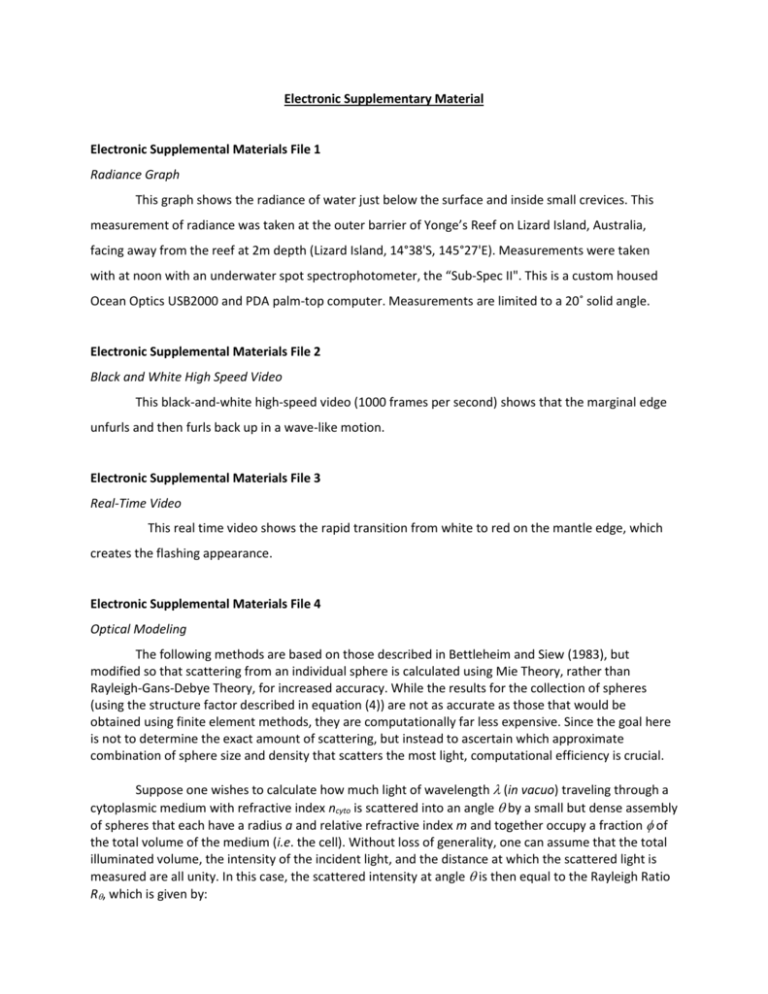
Electronic Supplementary Material Electronic Supplemental Materials File 1 Radiance Graph This graph shows the radiance of water just below the surface and inside small crevices. This measurement of radiance was taken at the outer barrier of Yonge’s Reef on Lizard Island, Australia, facing away from the reef at 2m depth (Lizard Island, 14°38'S, 145°27'E). Measurements were taken with at noon with an underwater spot spectrophotometer, the “Sub-Spec II". This is a custom housed Ocean Optics USB2000 and PDA palm-top computer. Measurements are limited to a 20˚ solid angle. Electronic Supplemental Materials File 2 Black and White High Speed Video This black-and-white high-speed video (1000 frames per second) shows that the marginal edge unfurls and then furls back up in a wave-like motion. Electronic Supplemental Materials File 3 Real-Time Video This real time video shows the rapid transition from white to red on the mantle edge, which creates the flashing appearance. Electronic Supplemental Materials File 4 Optical Modeling The following methods are based on those described in Bettleheim and Siew (1983), but modified so that scattering from an individual sphere is calculated using Mie Theory, rather than Rayleigh-Gans-Debye Theory, for increased accuracy. While the results for the collection of spheres (using the structure factor described in equation (4)) are not as accurate as those that would be obtained using finite element methods, they are computationally far less expensive. Since the goal here is not to determine the exact amount of scattering, but instead to ascertain which approximate combination of sphere size and density that scatters the most light, computational efficiency is crucial. Suppose one wishes to calculate how much light of wavelength (in vacuo) traveling through a cytoplasmic medium with refractive index ncyto is scattered into an angle by a small but dense assembly of spheres that each have a radius a and relative refractive index m and together occupy a fraction of the total volume of the medium (i.e. the cell). Without loss of generality, one can assume that the total illuminated volume, the intensity of the incident light, and the distance at which the scattered light is measured are all unity. In this case, the scattered intensity at angle is then equal to the Rayleigh Ratio R, which is given by: 3 . 3a R M x, m, S q 4 (1) The first term M x, m, is the intensity of light scattered at angle by a single sphere, calculated using Mie Theory, where x is the size parameter and is given by: x 2 ancyto . (2) The second term is the structure factor S, which determines how much the light scattered from the various spheres interferes both constructively and destructively, which strongly affects how much scattered light is observed from the assemblage. If q 4 x sin , 2 (3) then, using the Percus-Yevick approximation for hard spheres (see Ailawadi, 1980), this structure factor is given by: S q where 1 , 1 c q (4) c q is the Fourier transform of the direct correlation function of the spheres and is given by: c q 24 3 q sin q q cos q q 2 2q sin q q 2 2 cos q 2 q6 2 4q 24q sin q q 12q 24 cos q 24 , 3 4 2 (5) in which the two coefficients and depend only on and are: 1 2 4 1 2 1 2 , and 6 4 1 2 . (6) The last term in equation (1) is simply the number of spheres, given by the volume fraction divided by the volume of an individual sphere. Now the degree to which a scattering substance reflects light back towards the source of the illumination (and thus appears highly reflective) is given by its angle-weighted scattering H. This equals: H S 1 g , (7) where S is the total amount of light scattered in all directions and g is the asymmetry parameter, which equals the average cosine of the scattered light. Since the total amount of scattered light depends on the illuminated volume and here one is interested in determining the relative scattering for spheres of different sizes and packing densities, one only needs to know what S is proportional to. Using standard integration over a sphere, this is: S R sin d , (8) 0 The asymmetry parameter equals: g R sin cos d 0 (9) R sin d 0 Using (8) and (9), one can determine how angle-weighted scattering (i.e. reflectivity) H depends on both the radii of the spheres a and their volume density for light of a given wavelength .


